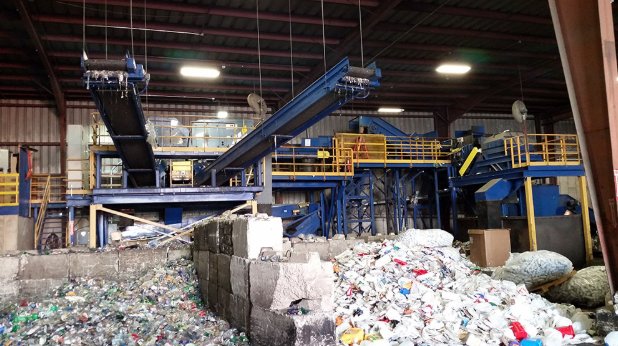Co-Mingled Recycling: Simplifying the Path to Sustainability

In the evolving world of waste management, co-mingled recycling has emerged as a game-changer for individuals, communities, and businesses looking to contribute to sustainability efforts. By streamlining the recycling process, co-mingled recycling offers a more efficient and effective solution to managing waste and preserving resources. In this article, we will explore the concept of co-mingled recycling, its benefits, and how it simplifies the recycling process, ultimately driving us toward a more sustainable future.
What is Co-Mingled Recycling?
Co-mingled recycling, also known as single-stream recycling, refers to the practice of mixing all recyclables—such as paper, cardboard, plastics, metals, and glass—into one container. Unlike traditional methods, where different types of recyclables must be sorted by material, co-mingled recycling allows for all items to be combined, making it easier for individuals to participate in recycling efforts without worrying about sorting.
The process simplifies the way recyclables are collected at the curbside, in office spaces, and at large-scale recycling facilities. By eliminating the need for sorting, co-mingled recycling encourages more people to recycle regularly and, as a result, contributes to increasing the overall rate of recycling.
The Benefits of Co-Mingled Recycling
1. Increased Participation and Convenience
One of the major advantages of co-mingled recycling is the convenience it offers to consumers. With traditional recycling systems requiring separate bins for each material type, many people are discouraged from recycling due to the added effort. Co-mingled recycling eliminates the need for sorting, making it far easier for individuals to participate. As a result, it encourages greater participation in recycling programs, leading to more recyclable materials being diverted from landfills.
2. Reduced Contamination
When recyclables are sorted manually or placed into separate bins, there is a higher likelihood of contamination—such as non-recyclable items being mixed in or recyclables being improperly cleaned. Co-mingled recycling, on the other hand, minimises contamination because the recyclables are processed at a recycling plant where they are automatically separated using advanced technologies. This method reduces human error and ensures a higher purity of the materials that are ultimately recycled.
3. Efficiency at the Recycling Plant
A significant benefit of co-mingled recycling is the efficiency it brings to the recycling plant. Once collected, recyclables undergo a sorting process that uses a variety of mechanical methods, such as conveyor belts, air classifiers, and rotating drums. This automated process ensures that materials are separated more quickly and accurately than manual sorting. This speeds up the recycling process, reduces labour costs, and allows for more materials to be processed in a shorter period of time.
Additionally, co-mingled recycling allows recycling plants to invest in more advanced technology, further improving the efficiency of the entire recycling system. These technologies help separate materials based on their size, weight, and density, resulting in higher-quality recycled products.
4. Conservation of Resources
By recycling a broader range of materials, co-mingled recycling plays a pivotal role in conserving natural resources. When materials are recycled, they can be reprocessed and reused in the production of new products, reducing the need for virgin resources. This process conserves energy, reduces emissions, and lowers the environmental impact of manufacturing. For example, recycling aluminium saves up to 95% of the energy required to produce new aluminium from raw materials.
Moreover, co-mingled recycling supports a circular economy, where materials are continuously reused, reducing waste and promoting sustainability.
How Does the Co-Mingled Recycling Process Work?
The co-mingled recycling process involves several steps that help to separate and recycle the collected materials. The following is a breakdown of how the system works:
-
Collection: Recyclables are collected in a single bin at homes, businesses, or other collection points.
-
Transportation: The collected materials are transported to a local recycling plant or processing facility.
-
Sorting: Once at the plant, the mixed recyclables are sorted using a combination of mechanical and automated processes. Advanced machines use technologies such as air separation, magnets, and optical scanners to separate paper, plastics, metals, and glass into distinct categories.
-
Processing: After sorting, the recyclables are cleaned and prepared for sale or reuse in manufacturing. For example, glass may be crushed and turned into new containers, while paper might be pulped to create new paper products.
-
Distribution: Finally, the processed materials are sold to manufacturers who will use them to create new products, completing the recycling loop.
The Role of Technology in Co-Mingled Recycling
A key factor that has made co-mingled recycling so successful is the integration of cutting-edge technologies at recycling plants. Machines designed to automatically sort materials based on their properties have revolutionised the way recycling is handled. For example, optical sorters use high-speed cameras and lasers to identify different materials and separate them accordingly.
Additionally, technologies like air classifiers and vibratory screens allow for more efficient separation of materials based on size, density, and weight. This reduces human intervention, decreases labour costs, and increases the overall efficiency of the recycling plant.
Conclusion
Co-mingled recycling is a transformative approach to waste management that simplifies the recycling process for individuals and businesses alike. Removing the need for sorting recyclables at the point of collection encourages more participation and reduces contamination.
What's Your Reaction?


















.jpg)
.jpg)
